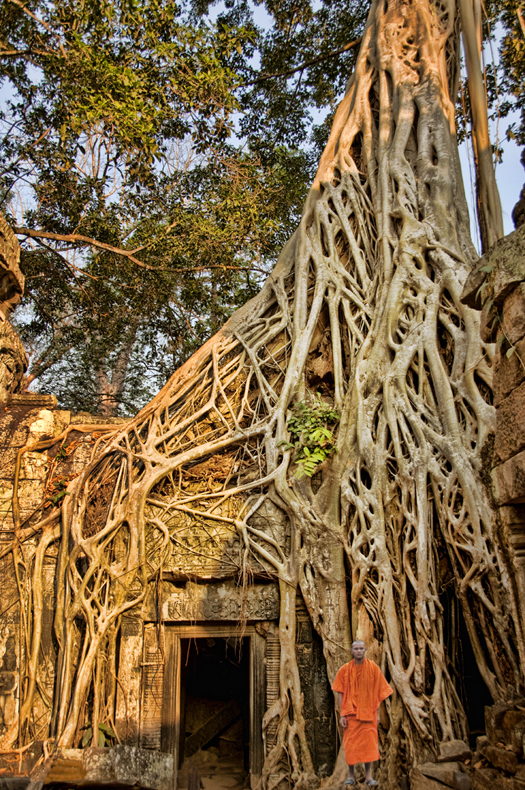
Flying into Siem Reap, Cambodia, Southeast Asia's greatest lake, Tonle Sap, comes into view in the distance. Its shores are lined by a clutter of Khmer homes, built on skinny stilts as protection from flooding during the monsoons. The lakeshore could be a scene out of most any third world country.
Angkor, on the other hand, is something special. Visible as a jigsaw of brownish blotches on the forest canopy of northern Cambodia, the vast temple complex witnessed one of history's great vanishing acts. The Khmer Kingdom spanned roughly the Middle Ages and, at its zenith, dominated much of Southeast Asia. Angkor was the capital city of Khmer, and with nearly a million people, the largest urban complex of Eurasia prior to the Industrial Revolution. And yet in the late 1500's, when Europeans stumbled upon the floral shaped towers of Angkor Wat, the Khmer's crown jewel, the civilization was in agonal decline.
Theories abound as to the cause of this demise, but recent excavations indicate that extremes of weather may have been the root cause. A series of megadroughts interspersed with periods of monster monsoons overwhelmed the world's most sophisticated hydraulic system since the aqueducts of Rome. This led to failure of the rice crop and widespread starvation. With political and religious unrest already destabilizing the kingdom, the food shortages became a final straw. Khmer never had a chance.
The Khmer civilization was not the first felled by climate chaos. Evidence suggests that the great Mayan Empire of Mesoamerica collapsed 500 years earlier from overpopulation and food shortages, aggravated by a series of droughts. The eery similarities between the fate of these two mighty Middle Age empires is not lost on climate scientists today as they struggle to predict the effects of global warming over the next century.